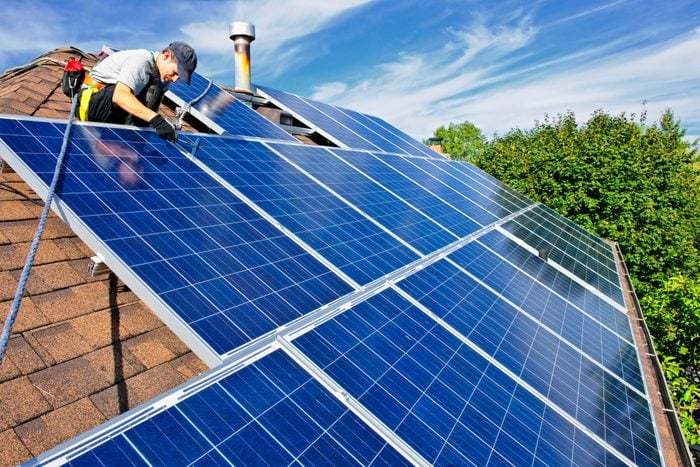How Does the Solar Panel Tax Credit Work?
Updated: Aug. 31, 2023

The new incentive program makes solar energy more affordable than ever for property owners. Here's how to take advantage of it.
It’s no secret installing solar panels can save you money long-term. From lower energy bill costs to tax breaks, there are numerous financial benefits to using solar power. And now, thanks to the newly expanded Inflation Reduction Act of 2022, federal tax credits for solar panel installation are more numerous than ever.
If you’re curious about installing solar panels, here’s everything you need to know about the solar panel tax credit, including how to check your eligibility and take advantage of it.
What Is the Solar Panel Tax Credit?
A program where the federal government reimburses homeowners for installing solar panels. Up to 30% of the costs of materials, installation, permits and fees will be covered for solar panels installed by the end of 2032. For panels installed in 2033, the credit falls to 26%, then to 22% in 2034.
Am I Eligible for the Solar Panel Tax Credit?
According to Sky Power Solar, “[a]nyone who buys and installs a PV [photovoltaic] system and pays federal taxes is eligible for this solar incentive.”
However, you “must be the PV system owner” to qualify. This means you must purchase the solar system yourself, with your own funds or a loan. The purchased system could be on your main property, but those installed on vacation homes, rental properties and stationary RVs also qualify for the tax credit.
How Does the Solar Panel Tax Credit Work?

According to the New York Times, the solar panel tax credit “reduces your bill dollar for dollar.” That means if you owe money when you file your taxes, the credit lowers this amount directly. But if you don’t owe federal tax, “you won’t get any of the credit as a refund,” per the Times. So you can’t make money off the tax credit.
April Walker, lead manager of tax practice and ethics at the American Institute of Certified Public Accountants, told the Times unused credit can be carried over to future tax years, allowing you to reach the full 30% reimbursement amount.
How Much Money Will I Save Switching to Solar Energy?
That varies greatly depending on your individual situation. Some factors that affect your bill include:
- How much electricity you use;
- How many solar panels you install;
- How your home is oriented (toward or away from the sun);
- How much shade your home receives.
Obviously, super-shady homes will not benefit as much as sunnier spots. Similarly, huge solar installations will naturally cost you more than smaller ones, though there’s no dollar amount cap on the tax credit.
Finally, you may be eligible for more tax incentives from your state government, or installation rebates from your utility company.
To get a better sense of how much money you might save switching to solar energy, try using the solar installation company SunPower’s online calculator. However, for a full analysis of solar panel discounts available to you specifically, it’s best to speak to a tax professional.
How Do I Claim the Solar Panel Tax Credit?
According to TurboTax, to claim the solar panel tax credit, you will need to file IRS Form 5695 as part of the relevant year’s tax return. Part I of the form will help you calculate your tax credit, and that numeric result can then be entered on your 1040.
If you forgot to claim the credit for the year you purchased the panels, you can still file an amended return to claim it.